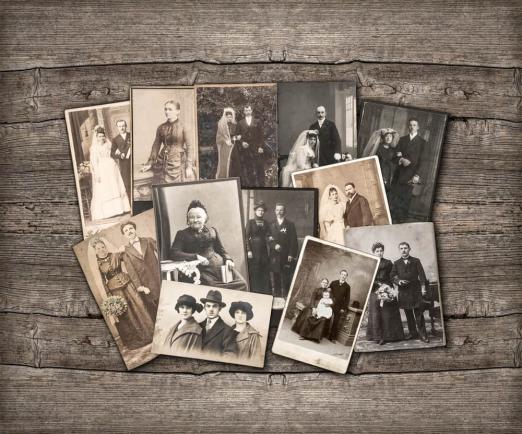
Editor's note: This article was originally published on Anne Banks' blog, Travel Parent Eat. It has been modified and republished here with permission.
There is a state holiday in Utah called Pioneer Day. This day celebrates the first day the Utah pioneer settlers arrived in the Salt Lake valley. In Utah it is kind of a big deal, but my husband (who isn't from Utah) gives me a hard time about it because no other state has a state holiday celebrating their settlers.
Anyway, in honor of my state's holiday, I thought I would share some ways to help involve your kids in family history. You may be wondering why we should involve kids in family history, isn't that something old, retired people do?
A review of a research study was recently published in the New York Times. The research study was conducted in Atlanta, and determined that children who knew about their family history were more resilient and had higher self-esteem than children who couldn't answer some basic questions about their family history.
The psychologists who conducted the study developed a 20-item questionnaire asking questions such as, "Who do you look like most in your family?" and, "Do you know where one of your grandparents grew up?" The researchers stated, it isn't important that children can answer questions, but the children understand their history which helps them develop a sense of belonging to something larger than themselves. Talking about family stories provides a sense of belonging and develops a family narrative. This family narrative offers examples to the children of how they should act in a given situation.
It can be hard to talk about family history without boring the kids, but there are some easy ways to bring up family history that doesn't seem like a history lesson.
Spend time with extended family members
Go to family reunions and let your kids play with their second and third cousins. On your way to the reunion and as you are returning home, talk about how everyone they played with is related to them.
Repeat family traditions
Tra-di-tions "� Traditions!! That song from Fiddler on the Roof makes me laugh because sometimes we really don't know how or why traditions get started, but we carry on because that's what we do. My mom told me a story about her grandmother who would cut the end off the roast, when my mom asked why, she said because that's how her mother did it. When she asked her great-grandmother why, she said, "Because the roast wouldn't fit in my pan."
Having silly, crazy traditions creates great memories. One of my favorite traditions is called the nickel sock. At Christmas, my dad's parents fill a stocking with nickels and each grandchild gets to keep as many nickels as they can draw out in one hand. One of my cousins won over $15 one year! The great-grandchildren now participate and my parents plan on continuing the tradition once my grandparents are gone.
Sharing pictures
This is another great way to keep family history stories entertaining. I have created some personalized photo books for my mother-in-law and father-in-law. I included the youngest pictures of them I could find. These photo books have given my in-laws the opportunity to share stories with my oldest about their childhood and their parents. It is easier for children to remember and relate to a story if they can see the person the story is about. Go through the boxes of pictures in your family's attics and create a digital copy that will be around for your children to look at as they hear the stories about great-granddad so and so. If you can, get the multi-generational pictures with your children, then they will really want to see the pictures often.
Visit cemeteries
Visiting cemeteries and places of past residence provide another tangible memory of ancestors. My grandma passed away about a year and a half ago, this last Memorial Day I took my oldest with me to visit her final resting place. He appreciated discussing where she is now and hearing some stories about her. We also discussed my aunt that passed away when she was only 10 days old. Her burial plot is right next to my grandma. The setting was easy, I didn't have to force him to listen to a family history lecture, and now he remembers the baby who never left the hospital. He also learned a little about the hardships his grandma went through, and can draw on that story to help him when he has a hard trial to face.
Create a family tree
Another way to bring up family history is by creating a family tree. There are a few different methods for creating a family tree on Pinterest. Pick one that suits you, your home decor or your children's interest and get it started. If your kids help create the family tree it will provide you with the opportunity to share a story or two about the people you are adding to the tree. You can display the tree in an area that your kids will see often, and chances are they will ask you to share a story about uncle so and so that they haven't heard before.
I love being able to live close to my extended family right now and the opportunities my children will have to know they belong to an incredible group of people who love them and will always support them.
How do you share family history with your kids?

